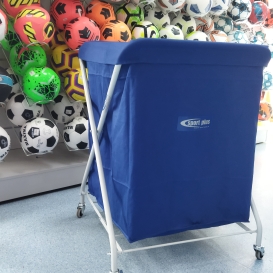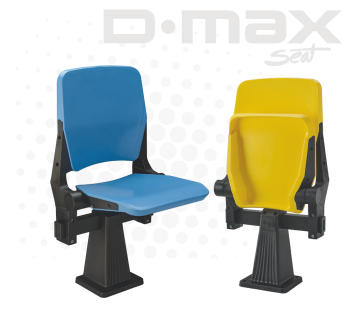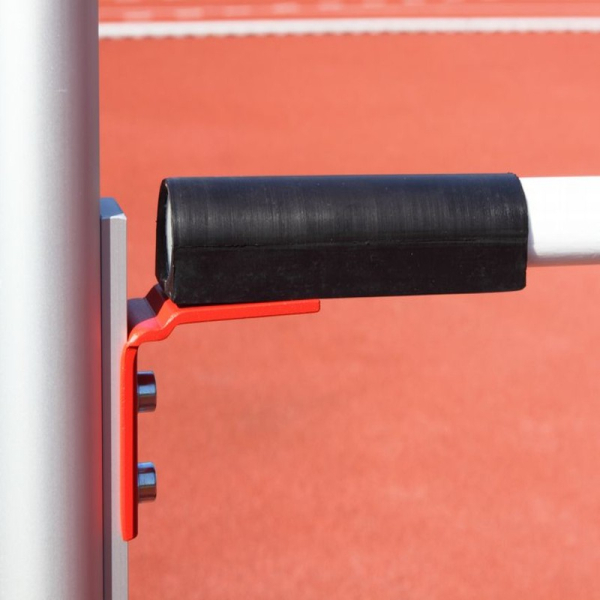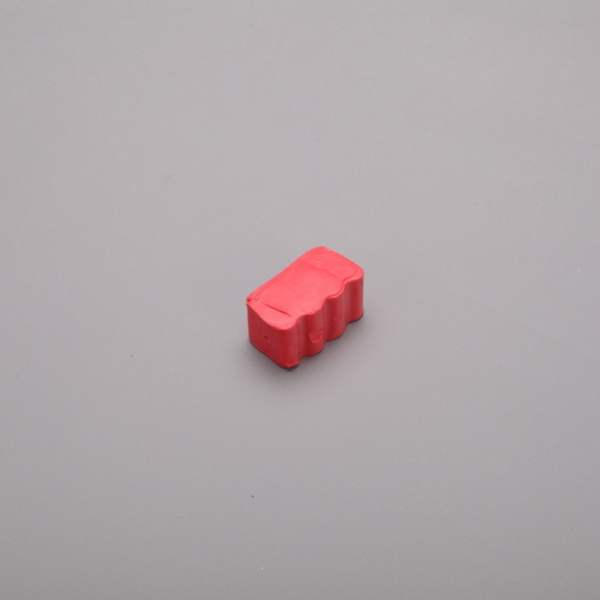High jump crossbars
The high jump crossbars are designed for superior performance and safety, meeting the needs of both amateur and professional athletes. We offer a variety of models, from WA-certified high jump crossbars, to PZLA training versions, to school models and specialized pole vaulting solutions. The crossbars are precisely calibrated to ensure excellent aerodynamic properties and minimize the risk of damage during intensive training and competition.Constantly raise the bar - get acquainted with the offer!
More useful information can be found at the bottom of the page.-
High jump crossbar, high-performance, fiberglass (IAAF standard)
498.94 PLN Tax inc.405.64 PLN NetCatalog no: 12-50009
Availability: Made to order -
Crossbar for high jump, training, made of fiberglass (PZLA certificate)
405.91 PLN Tax inc.330.01 PLN NetCatalog no: 12-50008
Availability: Made to order -
High jump crossbar, school PT-035
321.34 PLN Tax inc.261.25 PLN NetCatalog no: 12-50066
Availability: Made to order -
Non-stretch high jump bar with weights PTS-045
170.81 PLN Tax inc.138.87 PLN NetCatalog no: 12-50064
Availability: Made to order -
High jump training elastic bar with weights PTE-045
189.42 PLN Tax inc.154.00 PLN NetCatalog no: 12-50030
Availability: Made to order -
Training pole vaulting bar flexible with foam elements PTF-045
170.81 PLN Tax inc.138.87 PLN NetCatalog no: 12-50034
Availability: Made to order -
Plasticine 0.5 kg
35.50 PLN Tax inc.28.86 PLN NetCatalog no: 12-50000
Availability: Delivery within 24-48 hours
Helpful information about high jump crossbars in a nutshell
1 Types of crossbars and their use
Performance high jump crossbars- High-performance crossbars are ideal for top-level competitions, such as the World Championships or the Olympic Games, where every second counts and the stability of the equipment. They are designed for the highest level of athletic competition. Made of advanced materials, they provide excellent strength and flexibility, which is crucial for top performance. They feature high tensile strength and weather resistance, making these crossbars durable and reliable. They perform well in indoor and outdoor conditions.
Training crossbars for high jumping
- Training crossbars work well in the daily training of athletes preparing for competitions. These crossbars are designed to withstand heavy use and provide long-lasting performance. They are available in a variety of options, including rubber tips for added safety and durability.
School high jump crossbars
- School crossbars are the best choice for younger users and novice athletes. These crossbars are lighter and safer, which minimizes the risk of injury during learning and training. They are made of materials that combine strength with flexibility, allowing you to improve your high jump skills safely and effectively.
Specialized crossbars for pole vaulting
- Specialized pole vaulting crossbars, thanks to their flexibility and stability, are used during technical training where precision and safety are a priority. Flexible and non-stretchable weighted crossbars are designed for specific technical training. These crossbars are designed to adapt to the unique requirements of pole vaulting while ensuring safety and functionality.
- Among specialized crossbars, characterized by distinct attributes, we can distinguish: Flexible crossbars with additional foam elements - ideal for training where flexibility and energy absorption are required(PTF-045 - click on the link). Flexible cross bars with weights - have additional weights to provide additional stability and improve jumping performance(PTE-045 - click the link). Non-stretchable crossbars with weights - made of materials that do not stretch under load(PTS-045 - click the link).
2 Technical specifications and materials
Materials- Fiberglass is the primary material used to manufacture most high jump crossbars. This material has a high tensile strength, which means it can withstand significant loads without breaking. This is important because the crossbar must withstand the impact of the jumper and must not break. The ends of the crossbars are often made of plastic or rubber, which increases the safety of the athletes. Equally important is elasticity, which is the domain of fiberglass, which allows the crossbar to flex slightly under load and then return to its original shape. This helps to absorb the energy of the impact, which minimizes the risk of damage. It is worth mentioning that the aforementioned fiber is resistant to UV rays, moisture and extreme temperatures, which makes crossbars made of this material durable and can be used both indoors and outdoors.
- The plastics from which the ends of the crossbars are made are usually polyethylene and polyurethane. They are lightweight and strong, ensuring that the crossbar is firmly seated on the racks, minimizing the risk of shifting or falling off. Due to their lightness, these plastics do not put additional weight on the structure, which is important for maintaining the balance of the crossbar. The strength of these materials means that the crossbars can withstand repeated impacts and do not lose their properties even under heavy use. Polyethylene and polyurethane are also resistant to various weather conditions, which ensures their longevity and outdoor use. The flexibility of these materials allows the crossbar to be fixed securely and safely, which increases the comfort and safety of players during jumping. In this way, plastics, like fiberglass, contribute to the durability and functionality of high jump crossbars.
Design
Length: The standard length of the high jump crossbars is 4 meters. This characteristic is crucial to ensure the right level of difficulty and safety.
- Each crossbar is calibrated to a precise length to ensure its compliance with the standards and enable accurate determination of the height of the jump. In addition, crossbars have a specific diameter and weight that affect their performance characteristics.
Diameter: the typical diameter of a crossbar is about 30 mm. It affects the stiffness and flexibility of the crossbar - thinner crossbars are more flexible, and thicker crossbars are stiffer.
Weight: Being within the acceptable range of 2 kg to 3 kg, it is important for its stability and ease of use. Lightweight crossbars are easier to set up and carry, which is especially important during competitions and training. The weight of the crossbar also affects its behavior during a jump, where the right weight helps maintain stability and minimizes the risk of uncontrolled movement.
Manufacturing technologies
- Fiberglass is produced through a process called pultrusion, which involves pulling continuous glass fibers through a resin bath and then through a mold, which gives them the proper shape. This ensures that the material is highly uniform and strong. The resin-saturated fibers are durable and flexible after curing. The crossbars are calibrated to exact dimensions, and then the ends of the crossbars are molded and assembled using advanced industrial technology, which ultimately ensures their compliance with norms and standards. In addition, plastics and rubber are injection molded to ensure precise and durable ends, mounted on the crossbar with special adhesives to ensure a durable and stable connection.
3 Safety standards and certifications
- The safety and quality of high jump crossbars are strictly regulated by international standards, which ensure that the products meet the highest sports requirements. In order to obtain certifications such as WA (World Athletics) or PZLA (Polish Athletics Association), high jump crossbars must pass a series of quality tests.- The crossbars are subjected to comprehensive tests that verify their ability to withstand heavy loads without cracking or deforming. These tests simulate real-world conditions in which the crossbar must withstand the impact of the jumper and the forces generated during the jump. Flexibility tests are crucial to its functionality; they assess how the crossbar responds to load and how quickly it returns to its original shape after deflection. Stability tests verify that the crossbar stays in place on the racks during the jump. Crossbars also need to be resistant to UV rays, moisture, extreme temperatures and other weather conditions, which is meticulously tested under adverse conditions.
- When the equipment successfully passes the testing process in the aforementioned aspects and no inaccuracies or defects are detected that could potentially affect the functionality of the equipment and the safety of use, certificates are then awarded to emphasize the reliability and high quality of the equipment, such as the WA certificate - the most prestigious quality mark in athletics, allowing the equipment to be used in official international competitions, and the PZLA certificate, which is a Polish certificate confirming the product's compliance with Polish sports standards. Thanks to these safeguards, the high jump crossbars are not only functional, but also safe and durable, making them ideal for professional athletes expecting the highest quality, as well as for schools, sports clubs and any sports and recreational centers.
We encourage you to browse our range of high jump crossbars or contact us so that we can choose the most suitable and adequate model to suit your needs.











